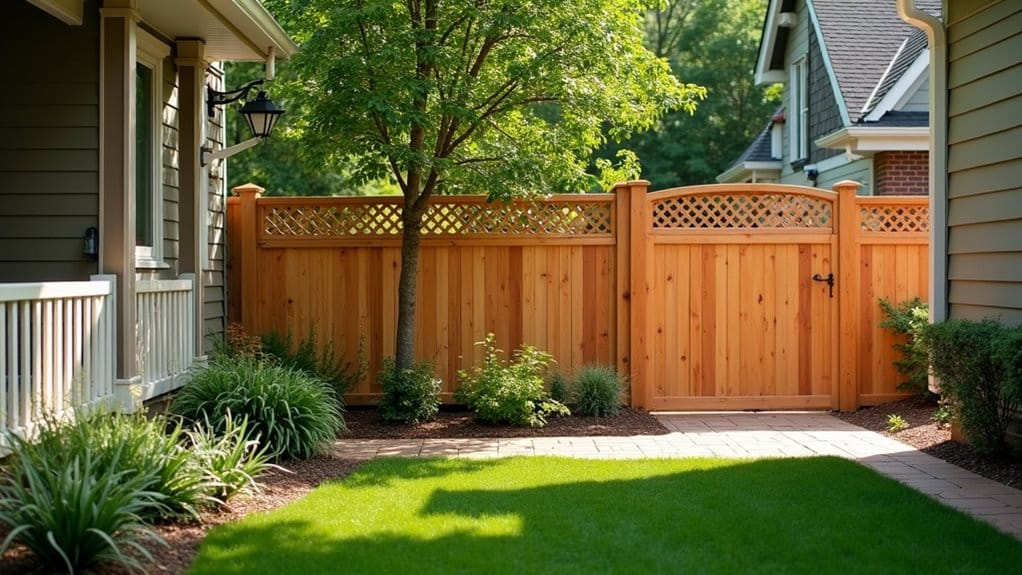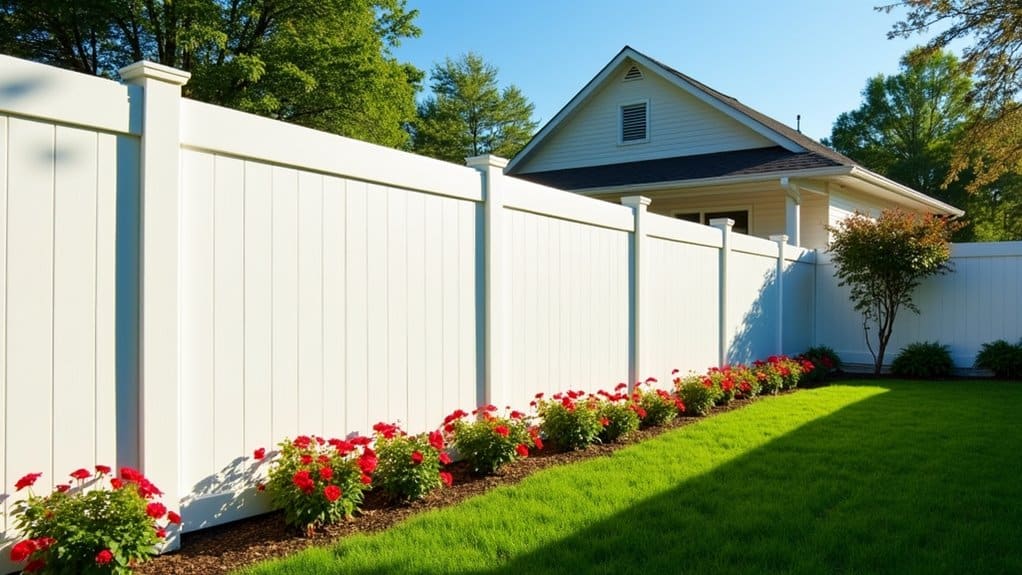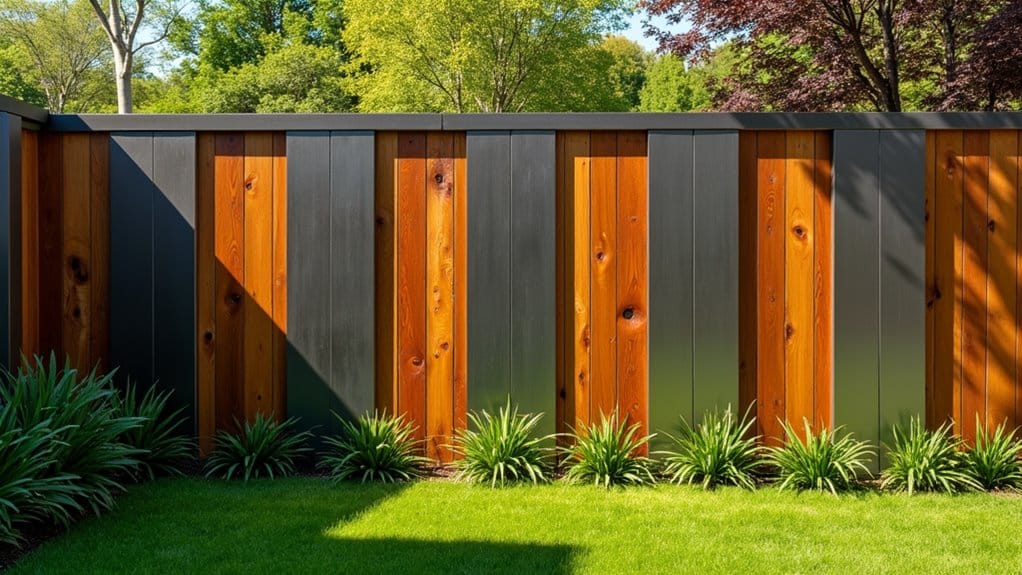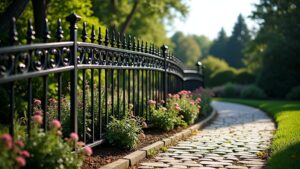Following local regulations for fence installation is crucial to avoid legal issues and ensure your project meets community standards. Check zoning laws, height restrictions, and material limitations to maintain the neighborhood's appearance. This compliance helps prevent disputes with neighbors and enhances safety, especially around pools. It's also important to know your property lines and any historical preservation rules. Understanding these details can lead to a smoother project and better relationships in your community.
Key Takeaways
- Following local regulations helps you avoid legal issues and fines related to zoning laws.
- Sticking to height and material guidelines keeps your neighborhood looking nice and cohesive.
- Knowing your property lines prevents disputes with neighbors, fostering a positive community vibe.
- Being aware of historical preservation rules is crucial in maintaining the character of historic districts.
- Talking to your neighbors about your fence plans can clear up concerns and help reach agreements, reducing conflict.
Understanding Local Legal Requirements
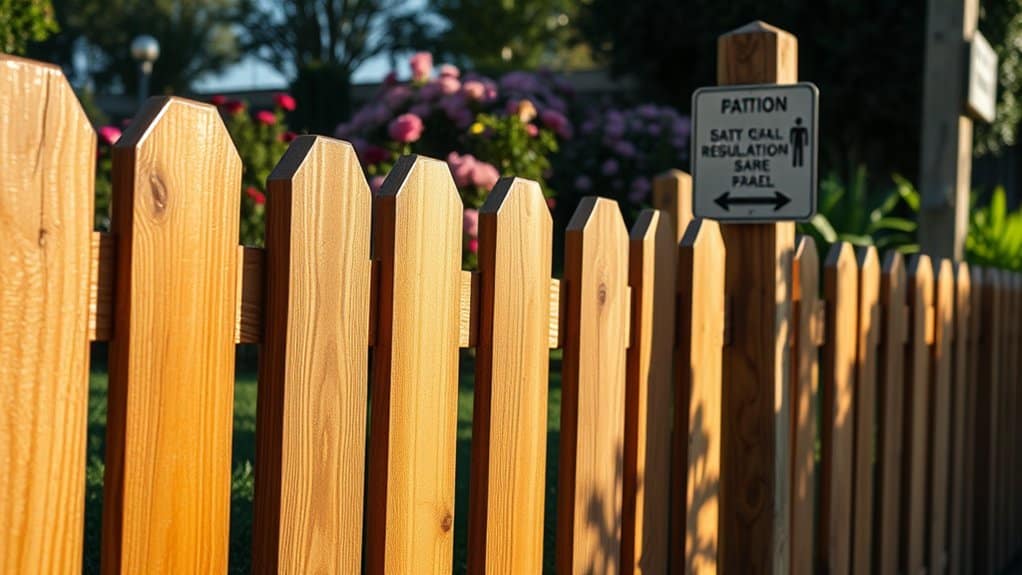
Before installing a fence, it's crucial to understand local legal requirements to ensure everything goes smoothly.
First, get a professional land survey to clearly define your property boundaries. This is important for following local zoning and fence rules. Property surveys are essential for preventing encroachments onto neighboring properties, so check with your county assessor's office for accurate property maps, as you may need these for permit applications.
Zoning laws often dictate what materials you can use and where you can place your fence. If your fence will be taller than a certain height, you'll likely need a fence permit. Be sure to prepare your application with your fence plans and survey results. By following these steps, you can avoid disputes and have a successful fence installation that fits well with your property and neighborhood.
Importance of Fence Height Restrictions
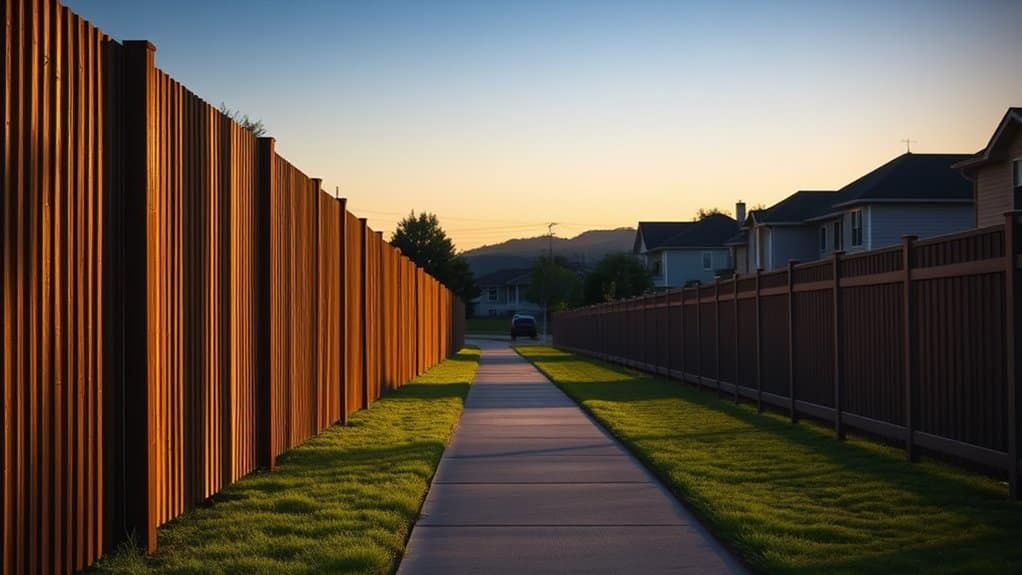
Understanding fence height restrictions is crucial for keeping your neighborhood visually appealing and harmonious. For instance, a well-placed fence can prevent blocking views and maintain a sense of openness. Additionally, adhering to local regulations ensures that your fence remains compliant with community standards and avoids potential disputes with neighbors. Compliance with local zoning ordinances also helps maintain safety and visual harmony in your area.
Visibility and Aesthetics
Fence height restrictions are important for urban planning, balancing safety and aesthetics in your community. For example, front yard fences are typically capped at 3.5 feet to keep an open feel, while backyard fences can go up to 6 feet, depending on local rules. This is crucial for corner lots, where shorter fences help maintain visibility for drivers and pedestrians. Additionally, understanding California fence laws is essential to ensure compliance with local regulations before installation. It's also worth noting that pool area safety guidelines require a minimum fence height of 4 feet in many areas.
Neighbor Relations and Harmony
Setting clear fence height regulations is key to maintaining good neighbor relations.
Talking openly about your fence design shows respect for your neighbors' opinions and helps avoid conflicts. Conducting boundary surveys and following local rules can clear up any confusion about property lines and height limits.
By seeking neighbor input before building, you foster cooperation, which may even lead to shared upkeep of the fence. Adhering to community guidelines keeps the neighborhood looking cohesive, which can boost property values. Additionally, understanding the maximum residential fence height can help ensure compliance and prevent disputes with neighbors.
In short, following fence height rules can improve relationships and create a more peaceful community for everyone.
Material Limitations and Aesthetic Standards
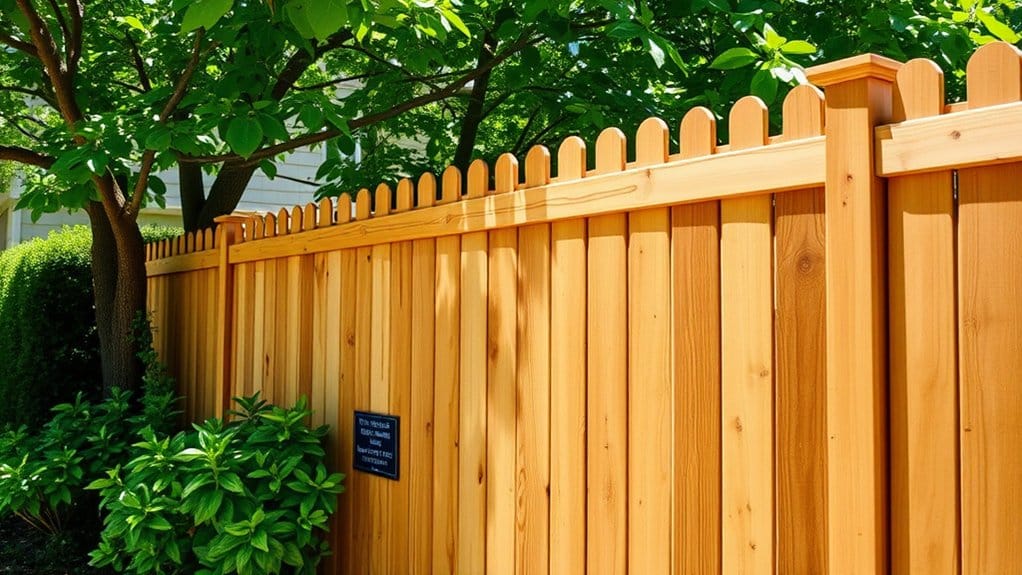
When planning your fence installation, be aware of local material restrictions and aesthetic standards. These regulations help ensure safety and community appearance. For instance, chain-link fences are often banned in residential areas, while eco-friendly options like composite wood are typically encouraged. Additionally, compliance with local codes is crucial to avoid potential fines and ensure a successful installation.
| Material Type | Restrictions | Aesthetic Impact |
|---|---|---|
| Chain-Link | Often restricted | Generally seen as unattractive |
| Composite Wood | Usually allowed | Blends well with natural surroundings |
| Wrought Iron | Required in historic areas | Enhances historical charm |
Navigating Property Line Considerations
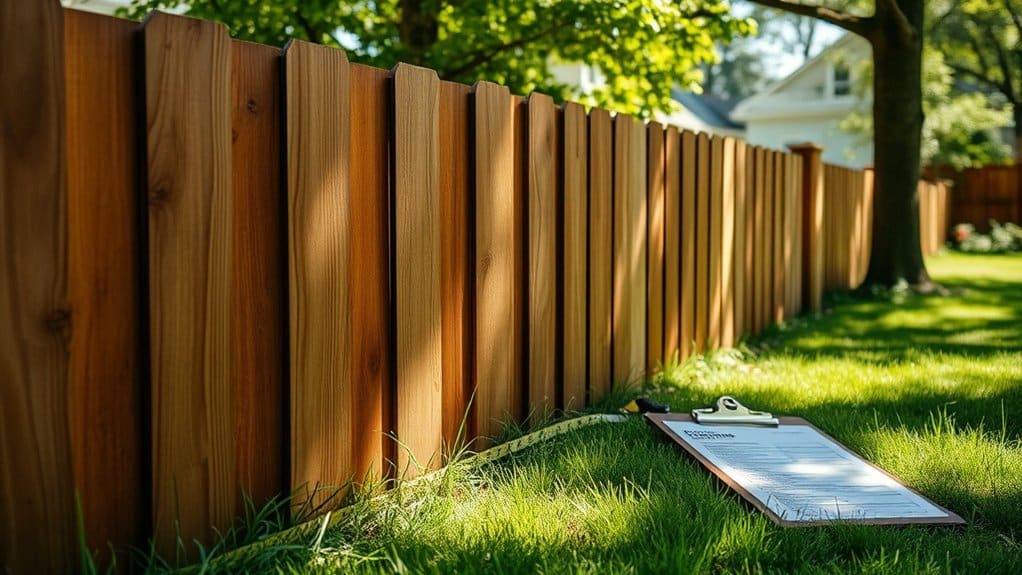
Understanding property line considerations is essential for a smooth fence installation.
First, accurately determine your property boundaries to avoid disputes with neighbors. Since property lines can be unclear, it's wise to hire a professional surveyor if needed.
Next, check local fencing regulations. Usually, fences should be 2 to 8 inches from the property line, but some areas allow fences to be placed directly on the line if both neighbors agree.
Also, clarify maintenance responsibilities with your neighbor to prevent future conflicts.
Historical Preservation Regulations
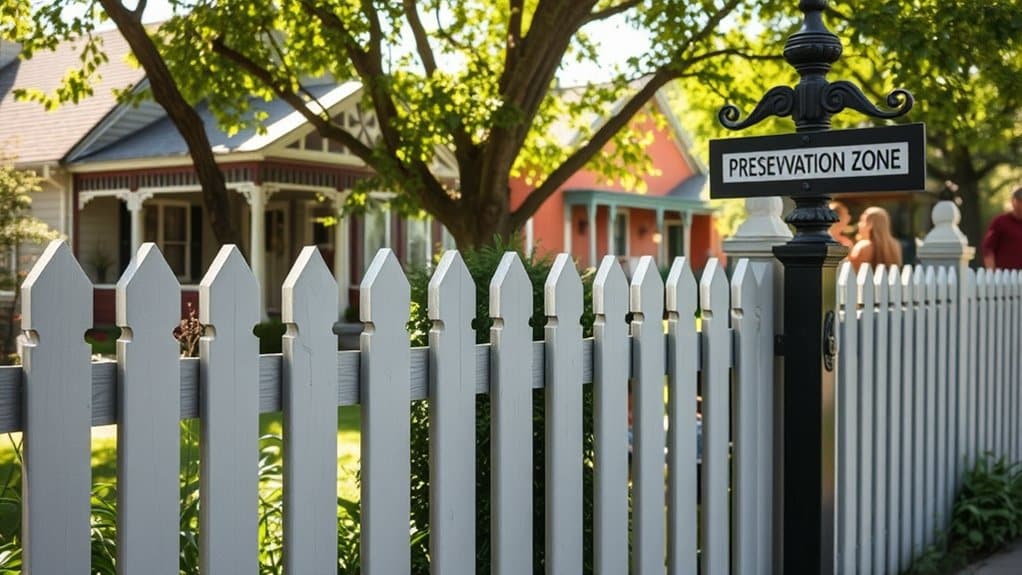
If you're thinking about installing a fence in a historic district, it's crucial to understand the local preservation regulations. These rules ensure that any changes, like adding a fence, fit the historic character of the area.
For example, you may need to use specific materials or adhere to height limits.
Often, you'll need to obtain a Certificate of Appropriateness to show that your project meets these guidelines.
Keep in mind that local rules can be stricter than national ones, focusing on unique architectural styles and materials specific to your neighborhood.
To avoid any issues and ensure your project is successful, take the time to familiarize yourself with these regulations before starting your fence installation.
Following these guidelines helps maintain the historical integrity of your property and community.
Enhancing Property Value Through Compliance
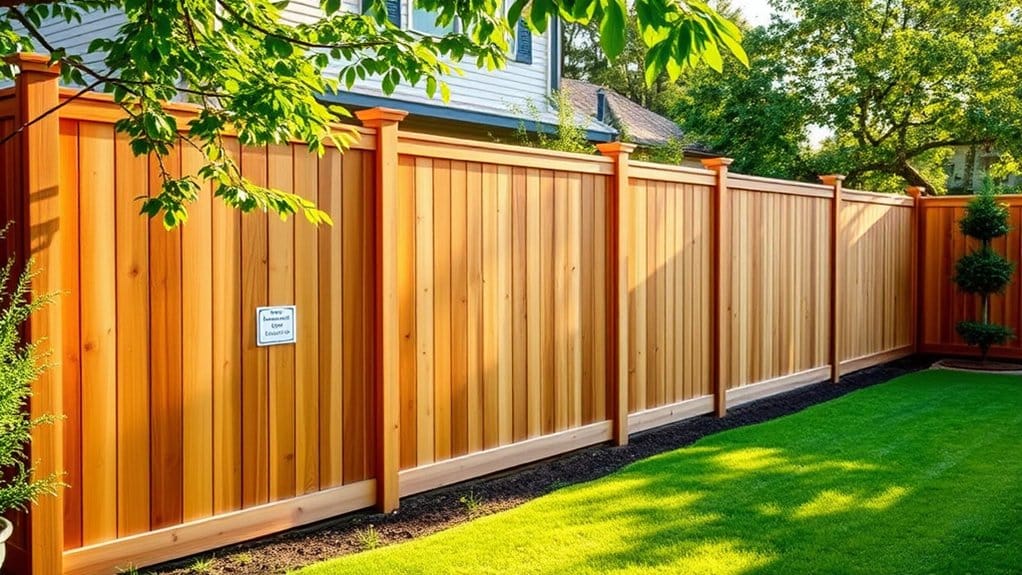
Complying with local fence regulations significantly increases your property's appeal.
A well-built, compliant fence attracts buyers and may lower your insurance rates.
Increased Market Appeal
Following local regulations is crucial for boosting your property's market appeal.
A fence that fits the neighborhood's style enhances curb appeal, attracting potential buyers. Today's buyers prioritize privacy and security, and a well-built fence meets these needs.
A secure, attractive home signals good maintenance, increasing its value. Plus, sticking to zoning laws helps avoid disputes and fines, protecting your investment.
Insurance Benefits
A well-installed fence boosts your property's appeal and offers valuable insurance benefits.
By following local regulations, you reduce liability risks, which is crucial for meeting insurance requirements. This compliance can simplify claims if damage occurs, protecting your investment and providing peace of mind.
Additionally, a well-maintained fence enhances your property's look and structural integrity, potentially increasing its resale value.
It also helps avoid fines or disputes with neighbors, which can save you money and preserve your reputation.
In short, a good fence not only marks your boundary but also strengthens your insurance position, making it a smart investment for your property's future.
Ensuring Safety and Structural Integrity
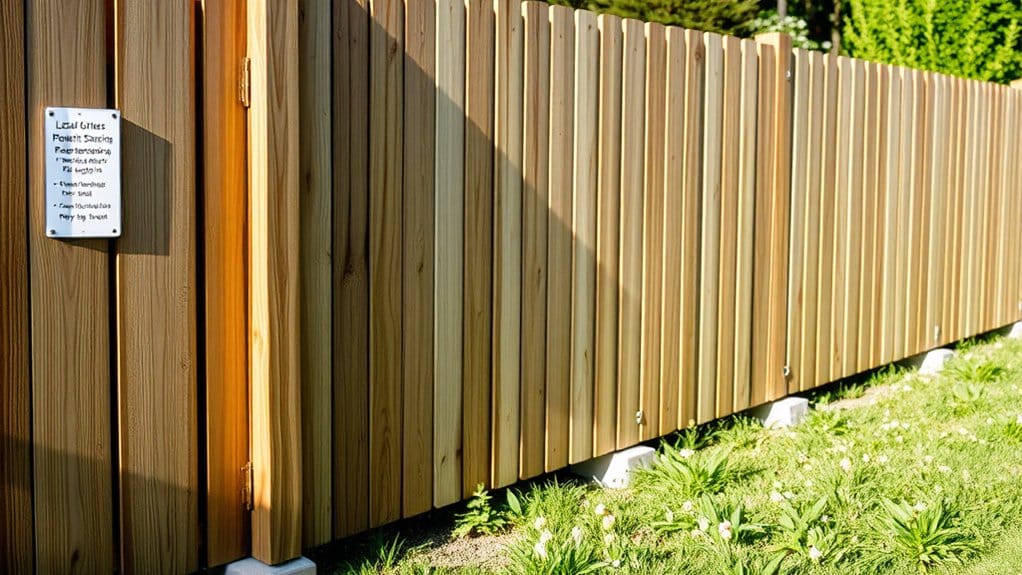
When installing a fence, safety and structural integrity are crucial. First, assess the site for hazards like underground utilities or uneven ground.
Wear personal protective equipment (PPE) such as gloves and safety glasses, and follow safety protocols to avoid accidents. Use proper lifting techniques for heavy materials to prevent injury.
Regularly inspect the fence to catch any problems early, ensuring it stays secure and durable. Follow local building codes and choose materials that can handle local weather.
Secure fence posts and panels properly to prevent collapse, and maintain your fence routinely for long-lasting strength.
Managing Neighbor Disputes Effectively
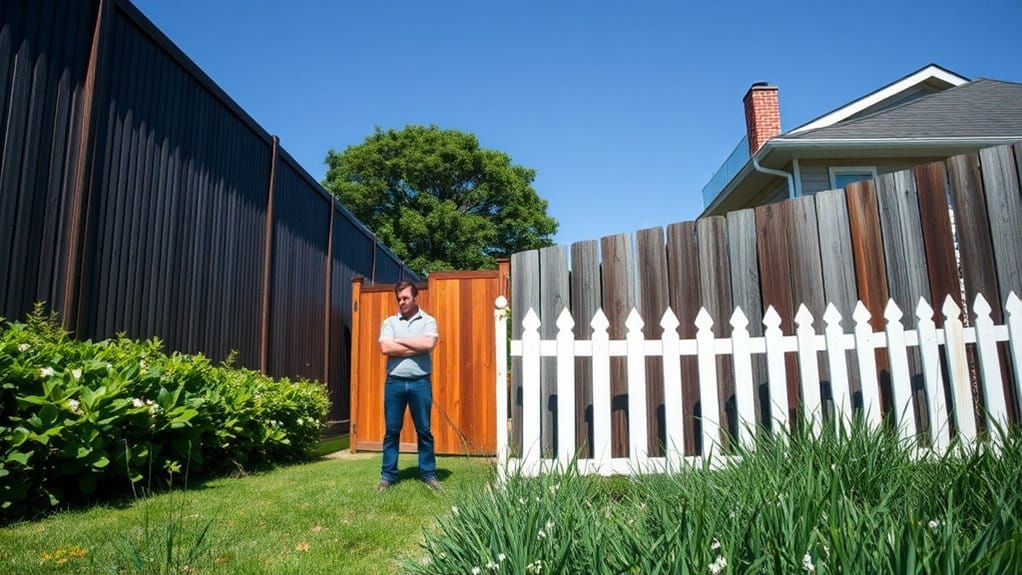
To handle neighbor disputes effectively, first, know your property boundaries.
Talk openly with your neighbors to address any issues before they grow. For example, if a tree branch is hanging over your yard, discuss it calmly with your neighbor.
Respectful communication can lead to a solution that works for everyone.
Clear Property Boundaries
Establishing clear property boundaries is crucial to avoid disputes with neighbors over fences.
Start by checking your property deeds or hiring a professional surveyor to get accurate measurements. Unclear markers can lead to expensive conflicts if your fence encroaches on a neighbor's land.
Also, be aware of local regulations regarding fence setbacks from property lines. If you intend to build your fence right on the line, ensure you have your neighbor's consent and follow zoning laws.
Clarifying boundaries upfront can help you maintain good relations with your neighbors and steer clear of future issues.
Open Neighbor Communication
Communicating with your neighbors is crucial when installing a fence. Start by letting them know your plans early, which opens up the chance for discussion about design and any potential effects on their property.
Listen to their concerns and address issues like who'll maintain the fence and how it will look. Try to reach an agreement on the details so everyone feels satisfied.
Consider sending a written note to clarify your intentions and build trust. If disagreements come up, be willing to compromise or seek mediation.
Navigating the Permit Application Process
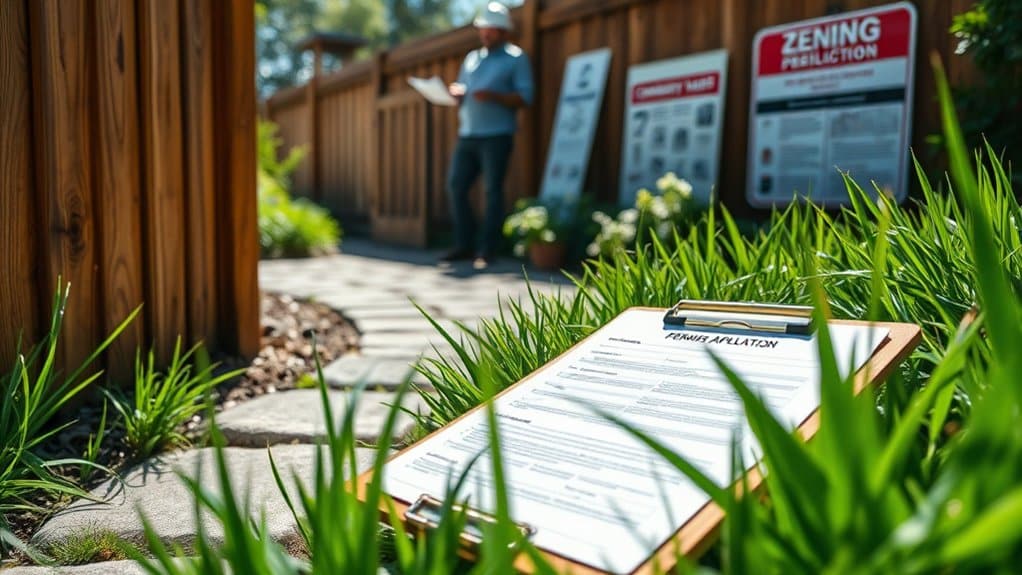
To streamline the permit application process for your fence installation, start by researching the permit requirements in your area.
Many local governments offer online submissions, which simplifies gathering and submitting necessary documents like site plans and plot surveys showing your fence's location.
Keep in mind that approval timelines can vary from a few days to weeks. Ensure your application includes accurate details about the fence's height and materials, as incomplete submissions can cause delays.
Don't forget to add any required contractor agreements or pictures of the proposed fence.
Avoiding Legal and Financial Issues
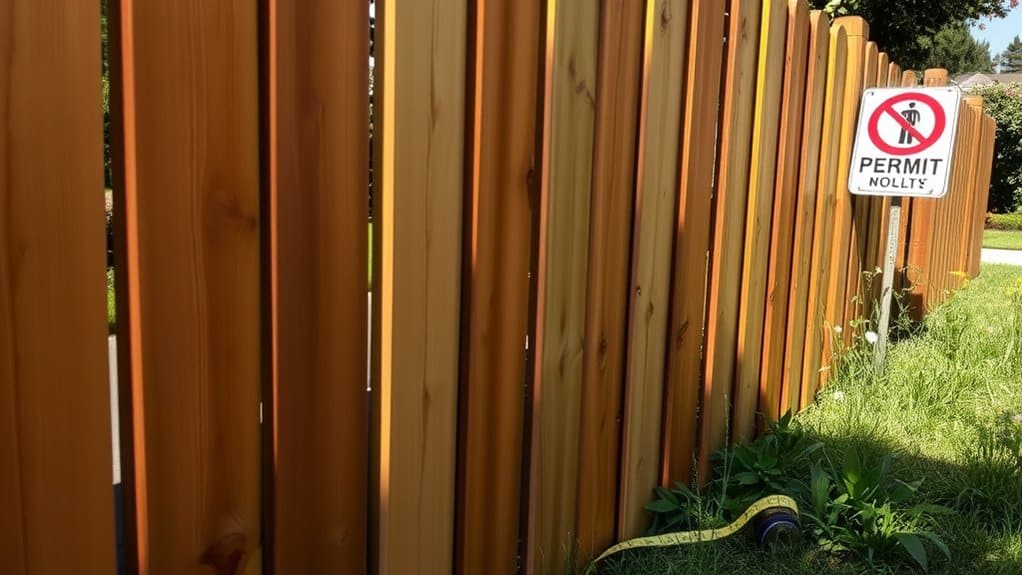
When installing a fence, it's crucial to follow local regulations to steer clear of legal and financial issues. Not adhering to zoning laws can lead to disputes with neighbors or even lawsuits.
For instance, if your fence crosses into a neighbor's property, you might've to pay for its removal or repairs. Additionally, ignoring local ordinances can result in fines that add unexpected costs to your project.
To protect your investment, conduct property surveys and check with local authorities or homeowner associations.
Frequently Asked Questions
What Types of Fences Require a Permit?
A permit is required for fences that exceed height limits, are on commercial properties, or use specific materials. Always verify property line agreements and local regulations to ensure compliance and prevent issues with your fence installation.
How Long Does the Permit Approval Process Usually Take?
Navigating the permit approval process can be tricky. Generally, it takes anywhere from a few weeks to several months. The time it takes depends on factors like how complicated your project is, how you submit your application, and the specific local regulations. For instance, a simple renovation might get approved faster than a large construction project.
Can I Install a Fence During the Winter Months?
Yes, you can install a fence in winter, but expect some challenges like frozen ground and snow. To make it easier, choose the right materials and plan your timing carefully for a successful project.
What Happens if My Neighbor Disagrees With My Fence Plans?
If your neighbor disagrees with your fence plans, it's important to communicate openly. Start by discussing your intentions with them. If that doesn't help, consider mediation or consulting a property expert to clarify boundaries. For example, if your neighbor is concerned about blocking light or views, find a compromise, like a shorter fence or a design that suits both parties. The goal is to resolve the issue amicably and keep the peace.
Are There Fees Associated With Fence Permits?
Yes, fence permits come with fees. When you apply for a permit, you can expect to pay between $30 and $500, depending on local rules and how complex your project is.
Conclusion
In summary, following local regulations when installing a fence is crucial to prevent disputes and legal problems. For instance, building a fence that exceeds height limits can lead to fines or even removal, as illustrated in the case of Smith v. Greenfield, where a homeowner faced costly legal issues over an incorrectly installed fence. By understanding and adhering to these regulations, you ensure a smooth installation process and maintain good relations with your neighbors.


